Heroes' Square Budapest: History, Monuments, and Visitor Information
At the end of Andrássy Avenue sits Heroes' Square, and honestly, it's pretty amazing. This huge plaza (locals call it Hősök tere) has this massive monument right in the middle that basically tells the whole story of Hungarian history. We always tell people this is one of those places you have to see when you're in Budapest. The Millennium Monument towers over everything, and there are these curved colonnades on both sides with statues of all the big names from Hungarian history.
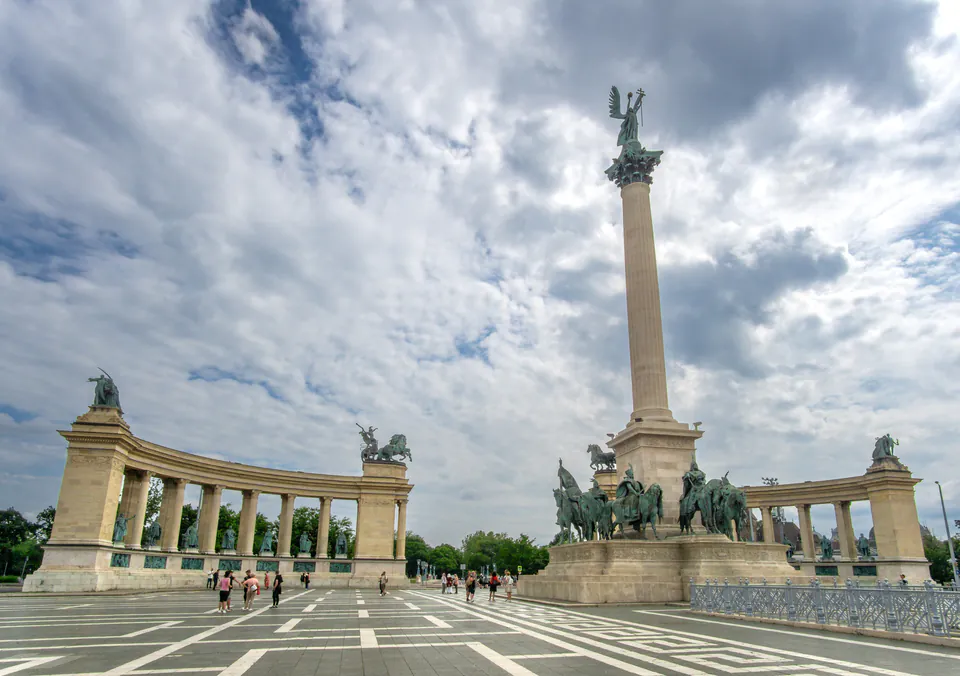
This UNESCO World Heritage Site gets tons of visitors, and not just because it looks good in photos. They built it back in 1896 for Hungary's 1000th birthday celebration, but it turned into something way bigger. It's like Hungary's outdoor hall of fame where all the legendary leaders and heroes watch over modern Budapest.
The Millennium Monument
The big column in the center is hard to miss. It goes up 36 meters, and at the top there's this bronze angel (Archangel Gabriel) holding the Hungarian crown and a double cross. There's this old story that the same angel showed up in St. Stephen's dream and gave him the crown that started Christian Hungary. We're not sure if that's true, but it makes for a good story.
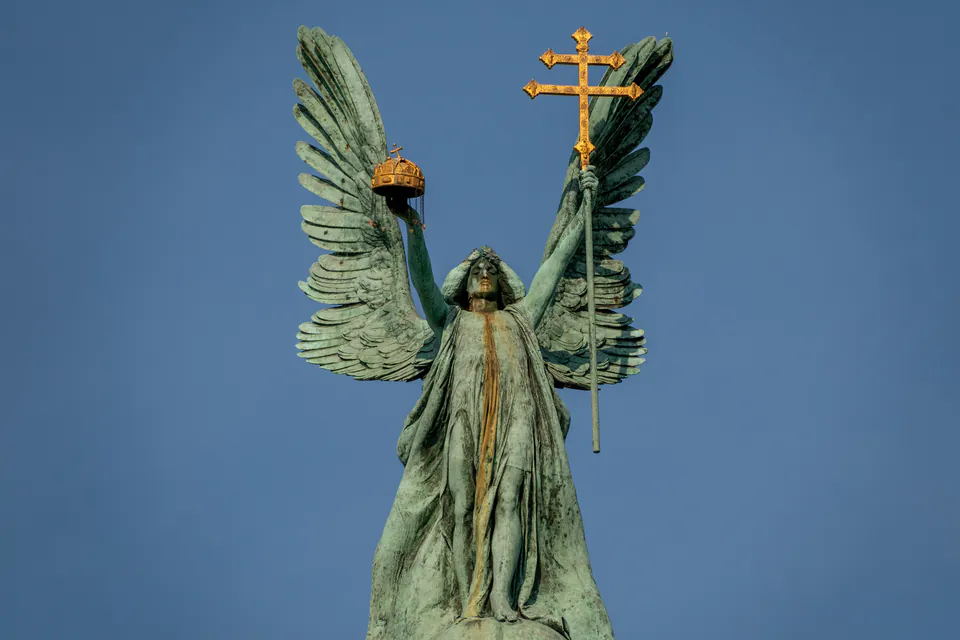
Down at the bottom, there are seven guys on horses made of bronze. These are the Magyar chieftains who came into this area in 896 AD and basically founded Hungary. Árpád is the main guy in front since he was the leader. The other six (Előd, Ond, Kond, Tas, Huba, and Töhötöm) are right behind him. The horses look like they're about to start galloping, which is pretty cool.
Building this thing took forever. They started in 1896 but didn't finish until 1929. During that time, politics changed a lot. Originally they had Habsburg rulers in some of the spots, but Hungarians got tired of foreign kings, so they replaced them with Hungarian heroes instead.
The Gallery of Hungarian Greatness
Those curved walls on both sides aren't just for show. Each one has seven huge bronze statues of the most important people in Hungarian history. We spent a good hour just walking around looking at all of them during our first visit.
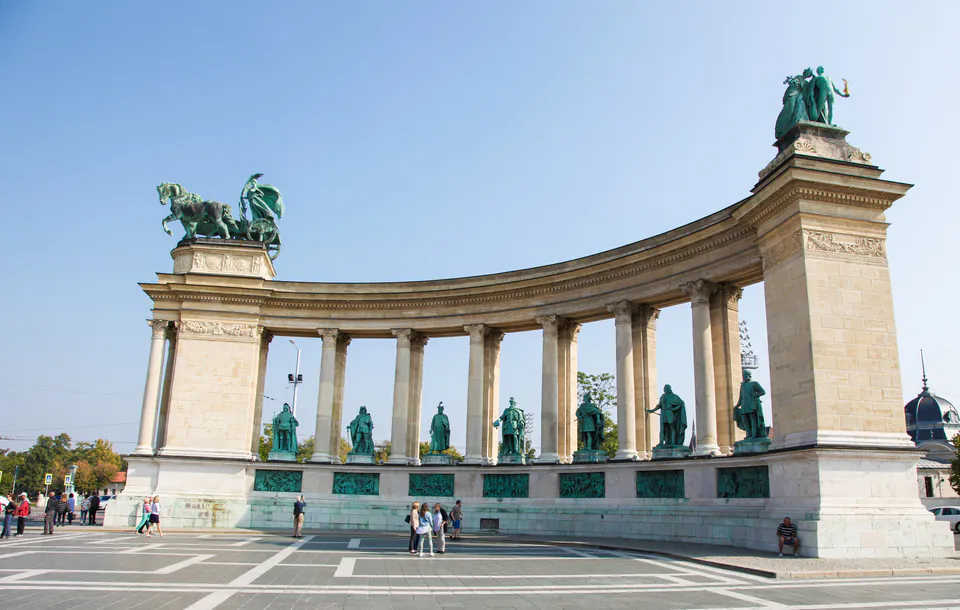
The left side is all about the kings who built the country. King St. Stephen is first because he turned Hungary from a bunch of tribes into a real Christian kingdom. Then there's St. Ladislaus, who was this knight-king that everyone in medieval Europe knew about. King Coloman was called "the Learned" and he added Croatia and Dalmatia to Hungary. Andrew II made the Golden Bull, which was basically Hungary's first constitution.
King Béla IV had to rebuild everything after the Mongols destroyed the country in 1241. That must have been tough. Charles I brought back royal power, and Louis I made Hungary really big, controlling land from the Baltic Sea all the way to the Adriatic.
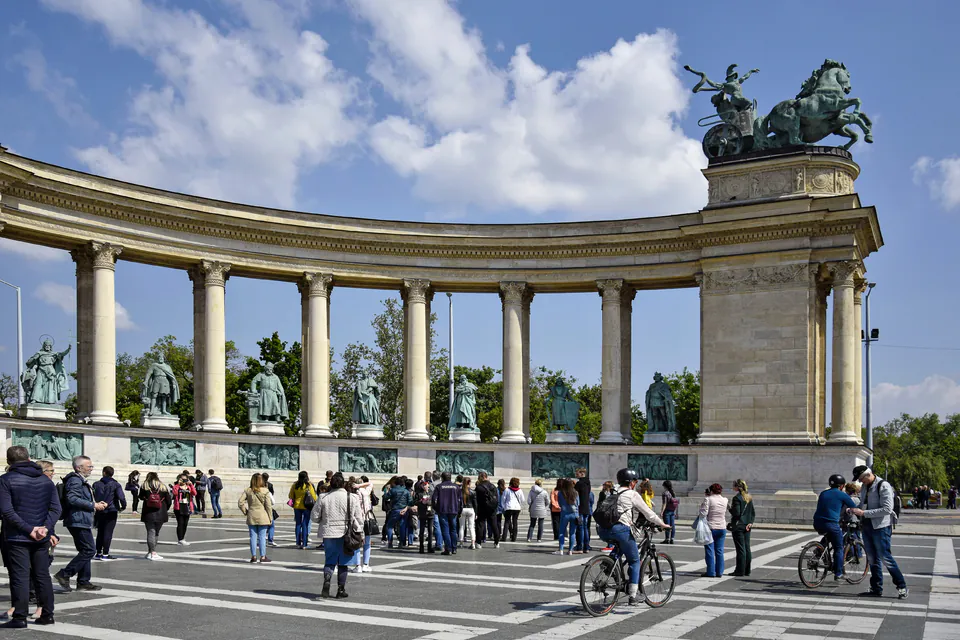
The right side is different. It's all about fighting back against foreign control. John Hunyadi fought the Ottomans and won some big battles that saved Christian Europe. His son, King Matthias Corvinus, made Buda into this amazing Renaissance city with scholars and artists from all over. The rest of the guys (Stephen Bocskai, Gabriel Bethlen, Emeric Thököly, Francis II Rákóczi, and Lajos Kossuth) all led revolts against foreign rulers. They kept the idea of Hungarian independence alive even when things looked hopeless.
Each statue has a relief panel underneath showing something important from that person's life. It's like a bronze comic strip telling Hungarian history. You see coronations, battles, diplomatic meetings, and sometimes people dying for their beliefs.
Symbolic Guardians Above
On top of the curved walls, there are four bronze groups that represent different ideas. These aren't real people but symbols of what shaped Hungary.
On the left side, you've got Labour and Wealth (a guy with a scythe and a woman planting seeds), showing that Hungary's strength came from hard-working people. War is this dramatic chariot scene with a serpent whip, reminding everyone that conflict made the nation what it is.
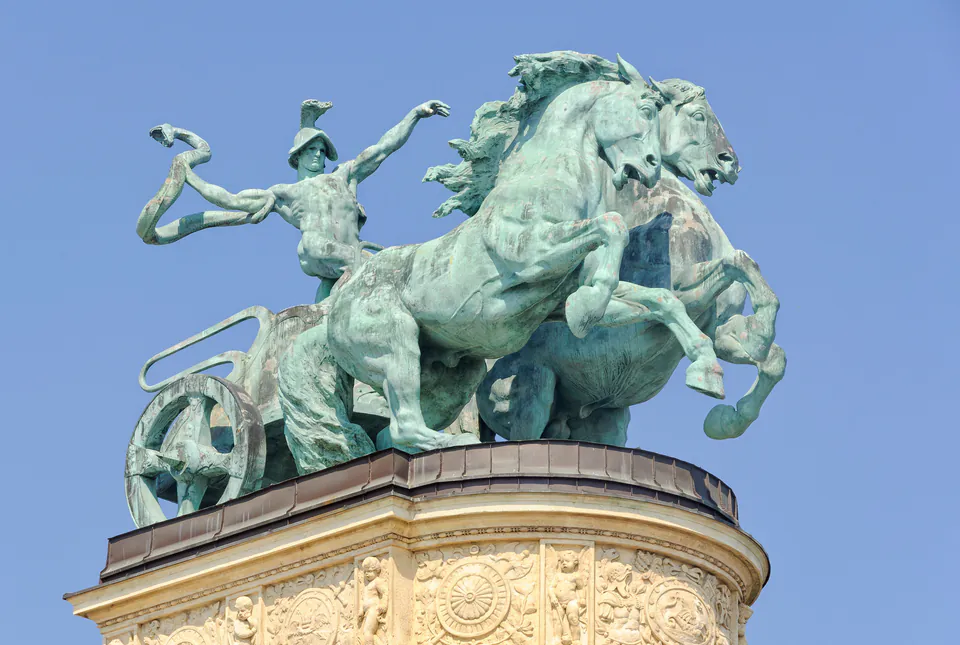
The right side has Peace (a woman in a chariot with a palm branch), representing the harmony Hungary always wanted. Knowledge and Glory finish it off, with a man holding a golden statue and a woman with a palm branch. It's all about Hungarian achievements and national pride.
Memorial Stone of Heroes
Across from the big monument, there's this huge stone surrounded by an iron chain. It's called the Memorial Stone of Heroes, and it has a simple message: "To the memory of the heroes who gave their lives for the freedom of our people and our national independence."
This isn't like the Tomb of the Unknown Soldier that some countries have. It's more about remembering all the regular people who died fighting for Hungarian freedom. While the monument celebrates famous leaders, this stone is for everyone else who made sacrifices.
There's actually an artesian well under this memorial from 1878 that supplies water to the Széchenyi and Dagály Baths. So it's not just symbolic, it's also practical, which seems very Hungarian to us.
Architectural Grandeur
Heroes' Square isn't just the monument. There are two big museums on either side that make the whole area look incredible. The Museum of Fine Arts is on the left with these massive columns and looks like a Greek temple. Albert Schickedanz and Fülöp Herzog designed it between 1900 and 1906, and it has one of Central Europe's best art collections.
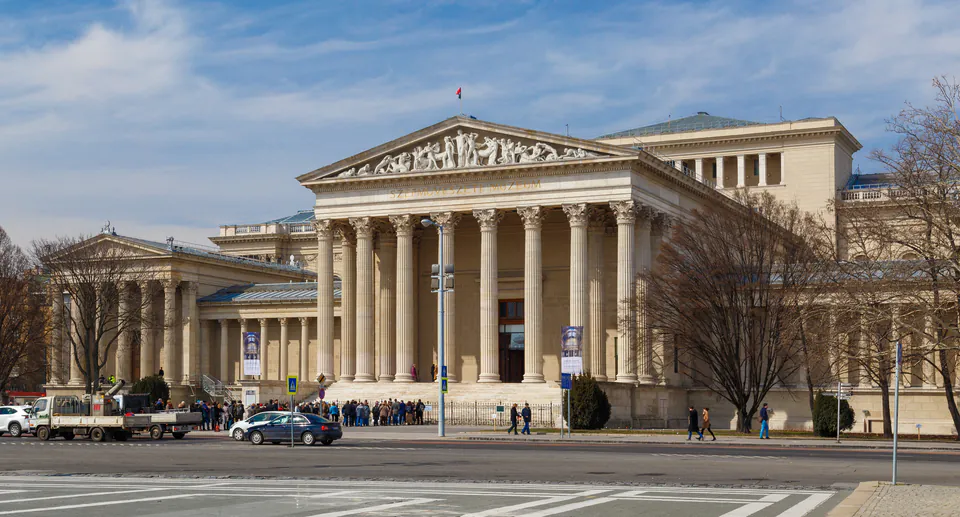
On the right side is the Kunsthalle (Palace of Art), which shows contemporary art. Same architects, same style, but it does modern exhibitions. The decoration on top shows King St. Stephen as a patron of the arts, connecting Hungary's first king to today's culture.
Having these two buildings (one for old art, one for new art) creates this nice conversation between past and present that fits perfectly with what the square is all about.
Gateway to City Park
Heroes' Square is basically the front door to City Park, one of Budapest's best green spaces. They planned it this way so you'd walk from the grand Andrássy Avenue, through the historical square, and then into the park for fun stuff.
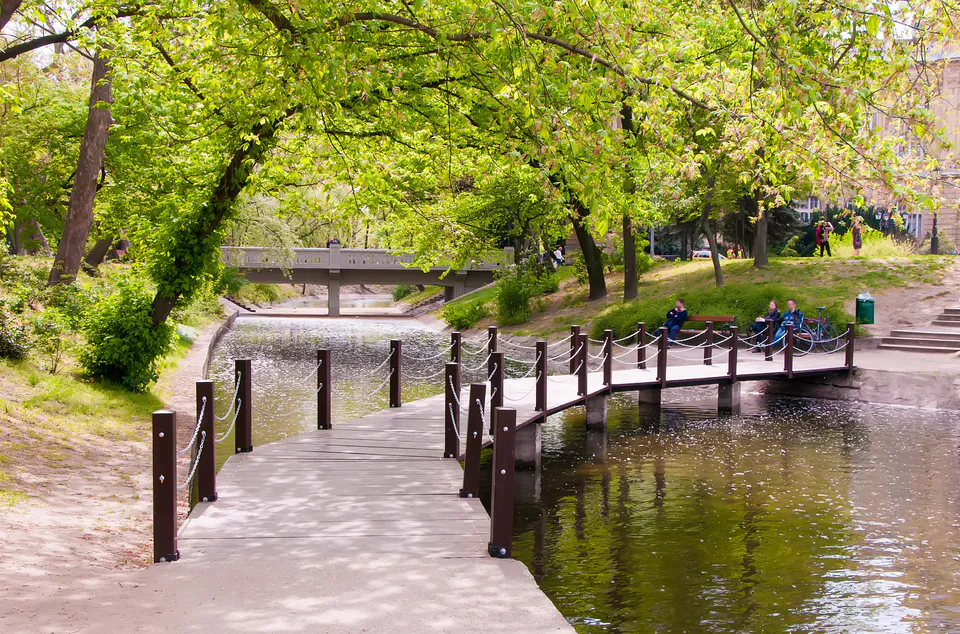
Right behind the square, you can see Vajdahunyad Castle, which looks like a fairy tale and shows different periods of Hungarian architecture all in one building. The Széchenyi Thermal Baths are there too if you want to relax in hot springs. There's also a zoo and other attractions depending on the season.
We love how you can go from thinking about heavy historical stuff to just having fun in the park. It keeps Heroes' Square from feeling too serious or like a boring history lesson.
Getting There and Practical Information
Getting to Heroes' Square is pretty easy. The M1 metro line (the yellow one) goes right there to Hősök tere station. This metro line is actually a UNESCO site itself because it was the first underground railway in continental Europe. They built it in 1896 for the same millennial celebration as the square.
Transportation Options to Heroes' Square
| Transport Type | Lines/Numbers | Notes |
|---|---|---|
| Metro | M1 (Yellow Line) | Direct to Hősök tere station |
| Bus | 20E, 30, 30A, 105 | Multiple options available |
| Trolleybus | 75, 79 | Electric trolley service |
| Walking | From city center | Via Andrássy Avenue (2.5km) |
The square is open 24 hours and it's free, so you can visit anytime. We recommend going early in the morning if you want fewer crowds and good photos. Evening is nice too because they light everything up and it looks dramatic.
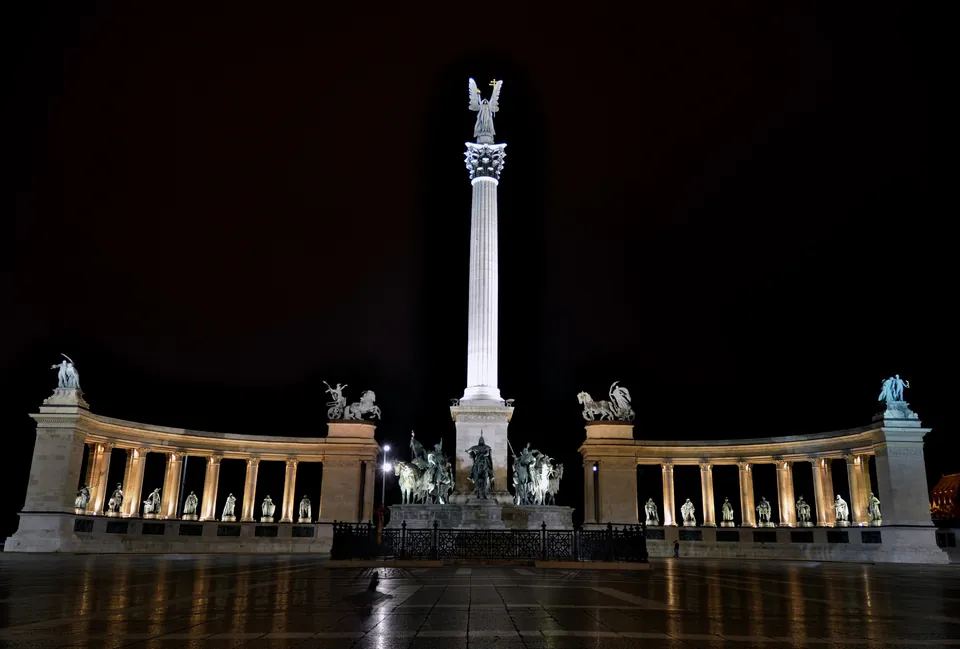
Events and Celebrations
Heroes' Square isn't just a museum piece. They still use it for big events and celebrations. Every September there's the National Gallop with horse competitions and cultural stuff, which makes sense given all those bronze horses.
Political rallies, memorial ceremonies, and concerts happen here too. In 1989, they reburied Imre Nagy here, which was a huge deal because it symbolized Hungary breaking away from communist rule. We think it's cool that the square keeps being part of Hungarian history instead of just remembering it.
Photography and Visitor Tips
There are lots of good spots for photos at Heroes' Square. The classic shot is from the steps of either museum, with the monument in the center and the colonnades on both sides framing everything.
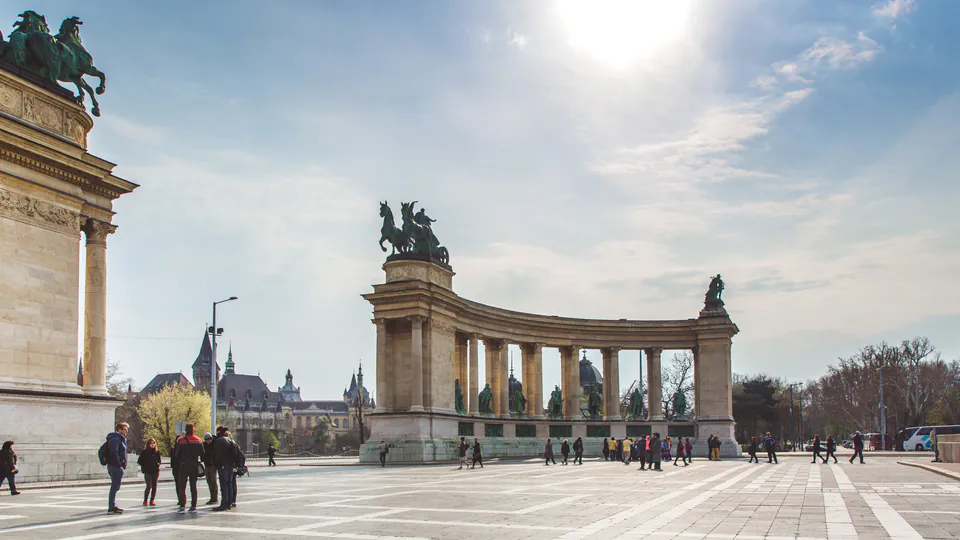
Give yourself at least 45 minutes to really look at everything. Each statue has details that tell you about different parts of Hungarian history. The bronze work is really well done, with facial expressions and period details that make these historical figures seem real.
Weather matters a lot here because there's no shelter. The square is completely open, so if it's raining or really hot, you're going to feel it. Summer mornings are best to avoid crowds and heat. Winter visits can be cold and windy since there's nothing to block the weather.